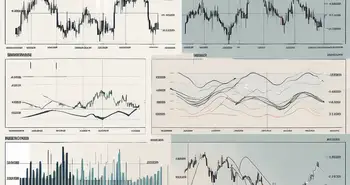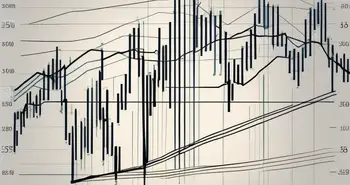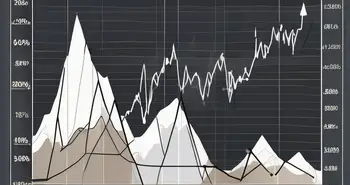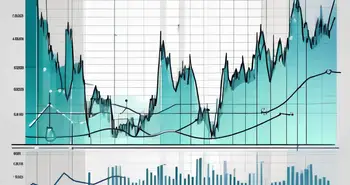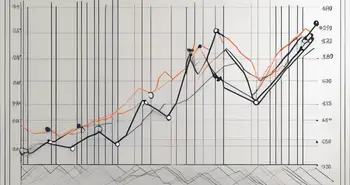Understanding Chaikin Volatility
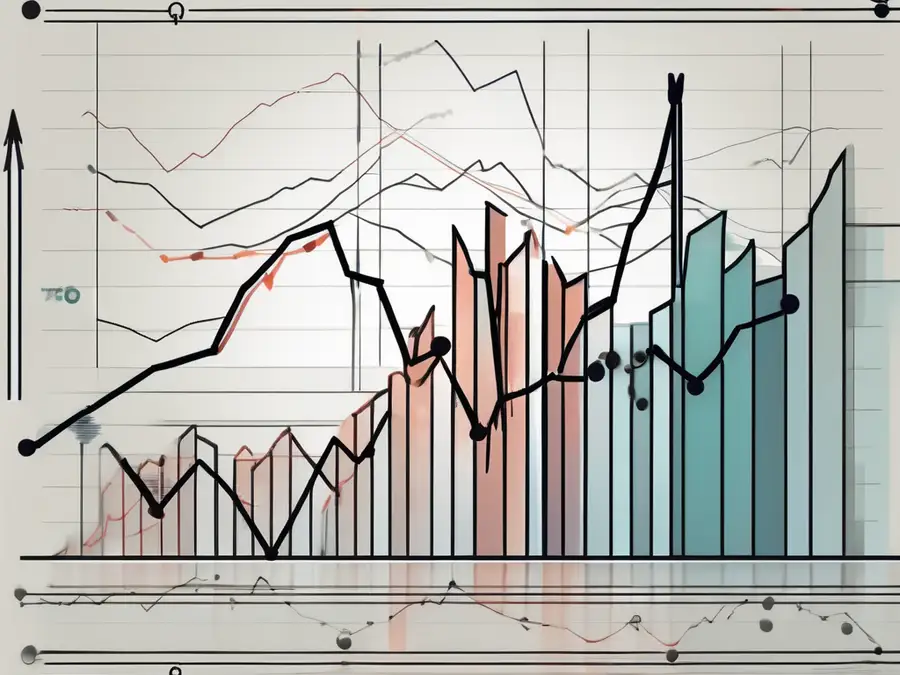
Chaikin Volatility is a powerful tool in the world of trading, providing valuable insights into market volatility and helping traders make informed decisions. In this comprehensive guide, I will take you through the ins and outs of Chaikin Volatility, from its concept and mathematical formula to its interpretation and practical application in trading strategies.
What is Chaikin Volatility?
Chaikin Volatility is a technical indicator that measures the volatility of a financial instrument, such as stocks or currencies, over a specified period of time. It was developed by Marc Chaikin, a renowned Wall Street analyst, to help traders identify potential trading opportunities and manage risk effectively.
The Concept Behind Chaikin Volatility
At its core, Chaikin Volatility is based on the premise that volatility plays a crucial role in market movements. When volatility is high, prices tend to experience significant fluctuations, presenting opportunities for traders to profit. Conversely, low volatility may indicate a period of market consolidation or impending price movement.
As a trader, it is essential to understand and analyze the level of volatility in the market to adjust your trading strategies accordingly. Chaikin Volatility provides a quantitative measure of volatility, empowering you to make informed decisions based on historical volatility data.
The Importance of Chaikin Volatility in Trading
One of the key reasons why Chaikin Volatility is highly regarded in the trading community is its ability to enhance risk management. By assessing the level of volatility, traders can determine the potential magnitude of price movements and adjust their position sizes and stop-loss levels accordingly.
Additionally, Chaikin Volatility can help identify periods of extreme volatility, which are often associated with market turning points. By spotting these high volatility periods, traders can position themselves to take advantage of significant price movements or to protect their existing positions.
The Mathematical Formula of Chaikin Volatility
The calculation of Chaikin Volatility involves several components, which are combined to derive the final volatility value. Understanding the formula and its components is crucial for interpreting the indicator accurately.
Components of the Chaikin Volatility Formula
The Chaikin Volatility formula consists of two main components: the High-Low Range (HLR) and the Volume Weighted Moving Average (VWMA) of the HLR. The HLR is calculated by subtracting the lowest low from the highest high over a specified period, representing the price range.
The VWMA of the HLR is then calculated by multiplying the HLR with the volume for each period, summing them up, and dividing by the total volume over the same period. This weighted average accounts for the influence of volume on volatility.
Understanding the Calculation Process
Once the components are calculated, the Chaikin Volatility value is obtained by applying a moving average to the VWMA of the HLR. The moving average smoothes out the volatility values over time, providing a clearer picture of the overall trend.
It is important to note that the choice of period for calculating Chaikin Volatility can vary depending on the trader's preferences and the time frame being analyzed. Shorter periods are useful for short-term traders, while longer periods are more suitable for long-term investors. It is important to experiment and find the right period that aligns with your trading goals and strategies.
Interpreting Chaikin Volatility
Once you have calculated the Chaikin Volatility values, the next step is to interpret them and extract meaningful insights about the market's volatility.
Reading Chaikin Volatility Indicators
High Chaikin Volatility values indicate that the market is experiencing significant price fluctuations and increased trading activity. This could signal potential trading opportunities, particularly if coupled with other technical indicators or chart patterns that confirm the volatility.
On the other hand, low Chaikin Volatility values suggest that the market is in a state of consolidation or experiencing a period of reduced price movements. Low volatility can precede significant price breakouts, so it is essential to stay alert and look for signs of impending volatility expansion.
Significance of High and Low Chaikin Volatility
As a trader, you can take advantage of high volatility by implementing strategies that capitalize on quick price moves. Volatility breakout strategies, for example, aim to ride the wave of price movements during volatile periods.
In contrast, low volatility may be a sign of reduced trading opportunities. During these periods, it is advisable to employ range trading strategies or consider waiting for higher volatility conditions before entering trades.
Using Chaikin Volatility in Trading Strategies
Chaikin Volatility can be a valuable addition to your technical analysis toolkit, enhancing your trading strategies and improving your overall performance. Let's explore some ways to incorporate Chaikin Volatility into your trading approach.
Incorporating Chaikin Volatility in Technical Analysis
One effective way to use Chaikin Volatility is by combining it with other technical indicators, such as moving averages or trend lines. By correlating these indicators with Chaikin Volatility, you can confirm potential entry or exit points and strengthen your trading decisions.
For example, if Chaikin Volatility indicates high volatility while a moving average crossover confirms a bullish trend, this convergence of indicators may present a strong buy signal. Conversely, if Chaikin Volatility is low, and a trend line breakout is observed, this confluence could support a selling opportunity.
Risk Management with Chaikin Volatility
Using Chaikin Volatility as a risk management tool is another practical application. By measuring the level of volatility in the market, you can adjust your position sizes, set appropriate stop-loss levels, and manage your overall exposure to risk.
For instance, during periods of high volatility, you may consider reducing your position size to mitigate the potential impact of sudden price swings. Conversely, during low volatility periods, you could opt for larger position sizes to capitalize on potential price breakouts.
Remember, risk management should always be a top priority in trading, and Chaikin Volatility provides valuable insights to help you make well-informed risk management decisions.
Common Misconceptions About Chaikin Volatility
As with any technical indicator, Chaikin Volatility is not foolproof and can be subject to misinterpretation or misconceptions. Let's debunk some common myths associated with Chaikin Volatility.
Debunking Myths Around Chaikin Volatility
Myth 1: Chaikin Volatility predicts the direction of price movements – Chaikin Volatility primarily focuses on measuring the magnitude of price movements and does not provide insight into the direction of future price movements. It is important to rely on other technical indicators or fundamental analysis to determine price direction.
Myth 2: Chaikin Volatility works in isolation – While Chaikin Volatility is a powerful tool, it is often more effective when combined with other indicators. By considering multiple indicators, you gain a more comprehensive view of the market and increase the accuracy of your trading decisions.
Avoiding Common Mistakes in Using Chaikin Volatility
Mistake 1: Overlooking market context – It is crucial to consider the broader market context when interpreting Chaikin Volatility. Factors such as news events, economic data releases, or overall market sentiment can significantly influence volatility and should be factored into your analysis.
Mistake 2: Using a one-size-fits-all approach – Chaikin Volatility is a versatile indicator that can be applied to various timeframes and trading strategies. It is essential to understand your trading goals and adapt the indicator's settings to align with your specific needs.
As an expert in using Chaikin Volatility, I have personally experienced the value and effectiveness of this indicator in my trading journey. I recall a time when I relied solely on price action and traditional indicators and found myself missing out on significant trading opportunities.
However, once I integrated Chaikin Volatility into my analysis, I was able to capture larger price movements and successfully manage my risk. This improvement in my trading performance gave me the confidence and conviction to fine-tune my trading strategy and achieve more consistent profits.
FAQ
1. What is Chaikin Volatility?
Chaikin Volatility is a technical indicator that measures the volatility of a financial instrument over a specific period, helping traders evaluate potential trading opportunities and manage risk effectively.
2. How is Chaikin Volatility calculated?
Chaikin Volatility is calculated using a formula that combines the High-Low Range (HLR) and the Volume Weighted Moving Average (VWMA) of the HLR. The HLR represents the price range, while the VWMA of the HLR accounts for the influence of volume on volatility.
3. How can Chaikin Volatility be used in trading strategies?
Chaikin Volatility can be incorporated into trading strategies by combining it with other indicators, such as moving averages or trend lines. Additionally, it can be used as a risk management tool to adjust position sizes and set appropriate stop-loss levels.
4. Are there any misconceptions about Chaikin Volatility?
Yes, common misconceptions include expecting Chaikin Volatility to predict price directions and using it in isolation. It is essential to rely on other indicators and consider the broader market context when interpreting Chaikin Volatility.
5. What are some common mistakes to avoid when using Chaikin Volatility?
Common mistakes include overlooking the market context and using a one-size-fits-all approach. It is important to consider factors such as news events and adapt the indicator's settings to align with your specific trading needs.
In conclusion, understanding Chaikin Volatility is a crucial aspect of successful trading. By grasping its concept, employing the mathematical formula correctly, and interpreting the indicators effectively, you can gain a significant edge in identifying trading opportunities and managing risk. Remember to combine Chaikin Volatility with other indicators and adapt it to your trading style for optimal results.
Ready to put your understanding of Chaikin Volatility to the test in a dynamic trading environment? Look no further than Morpher, the revolutionary trading platform that's changing the game with zero fees, infinite liquidity, and the ability to trade a vast array of assets. Whether you're looking to invest fractionally or take advantage of 10x leverage, Morpher offers a unique trading experience tailored to your needs. Embrace the future of investing with the safety and control of a non-custodial Morpher Wallet. Sign Up and Get Your Free Sign Up Bonus today, and elevate your trading strategy on a platform where innovation meets opportunity.

Disclaimer: All investments involve risk, and the past performance of a security, industry, sector, market, financial product, trading strategy, or individual’s trading does not guarantee future results or returns. Investors are fully responsible for any investment decisions they make. Such decisions should be based solely on an evaluation of their financial circumstances, investment objectives, risk tolerance, and liquidity needs. This post does not constitute investment advice.

Painless trading for everyone
Hundreds of markets all in one place - Apple, Bitcoin, Gold, Watches, NFTs, Sneakers and so much more.

Painless trading for everyone
Hundreds of markets all in one place - Apple, Bitcoin, Gold, Watches, NFTs, Sneakers and so much more.

